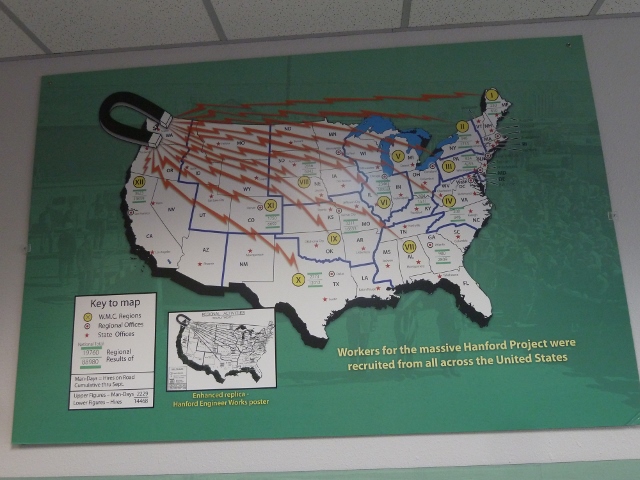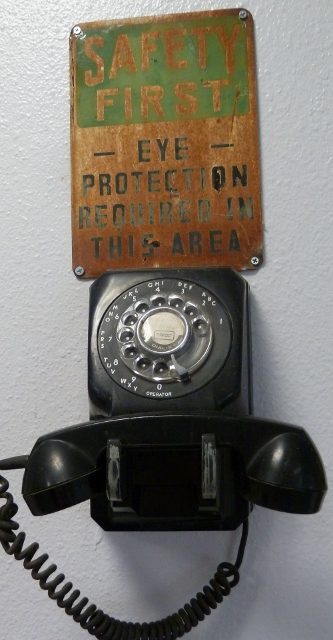In early June, 2015, husband, John, and I took the free government-run tour of the Hanford Nuclear Site, north of Richland, Washington. We both knew something of the chronology and the story but we were eager to learn more details and to see the places for ourselves. What I’ve summarized below is not meant to be a full and detailed explanation of all the history and parts of this two-fold massive project (first to build to get the plutonium and then, after the war, to clean up the mess that was made) but to share our new understanding of this episode in American history.
In the early1940s America greatly feared that the Germans would get a nuclear bomb (and use it) before we did. That fear prompted the haste to get the job done and since nobody had done a project like this before they were “flying by the seat of their pants” in many instances. It then follows that very little care, understanding or recognition was given at the time to the nuclear waste mess that was being created.
Tour participants had to arrive by 7:00 and show photo ID. Our group of about 30 was given numbered name badges and then invited to view a short video showing the overview of Hanford and the project, before, during and after. We enjoyed the many B&W vintage photos. Then we boarded the big bus and were off! The tour took just under five hours; no cameras were allowed.
The Hanford area is 640 square miles of flat plain covered mostly by sagebrush. The area is delineated by a crescent-shaped bend of the Columbia River from north-to-east-to-south. The entire plain is ringed by mountains. It was this proximity to the clear, cold Columbia River and the isolation and lack of population that were the determining factors to build the reactors in this place. We learned that the scientists and engineers really had no blueprints to go on, nor how-to manuals…… nobody before had built a machine to make plutonium (named for the planet Pluto) from uranium (named for the planet Uranus). The 55,000 or so workers were not told what it was they were working on, only that it was Top Secret work to win the war and that it was very important. An entire city was built to house and feed this large army of workers. .. which were recruited from all over the U.S.
The first reactors were built in a string along that arc of the river. (More reactors were built after WW II when America was engaged in the Cold War.) The process was 3-fold (and I don’t begin to understand it): make the fuel pellets from the uranium ore; radiate these cores/pellets in the reactor; and then separate the plutonium from the uranium. These three facilities were built widely separated.
Plutonium was successfully created; the Big Boy bomb was dropped on Japan in 1945 ending the war.
The cleaning up really did not begin until the 1970s and, according to our guide, they are still realizing what an enormous task it is. One figure I read said they hope to complete the clean-up by 2080. (There is plenty of information to be found on this topic on the Internet.) But, as our guide said, “Every day progress is being made in cleaning up this still pristine area.”
And those 640 square miles have, be default, been mostly preserved from people and development and remains as it was pre-modern civilization. In a real sense, because of Hanford and our country’s war needs, this huge area was protected and preserved ……. And this includes the last free-flowing stretch of the Columbia River.


